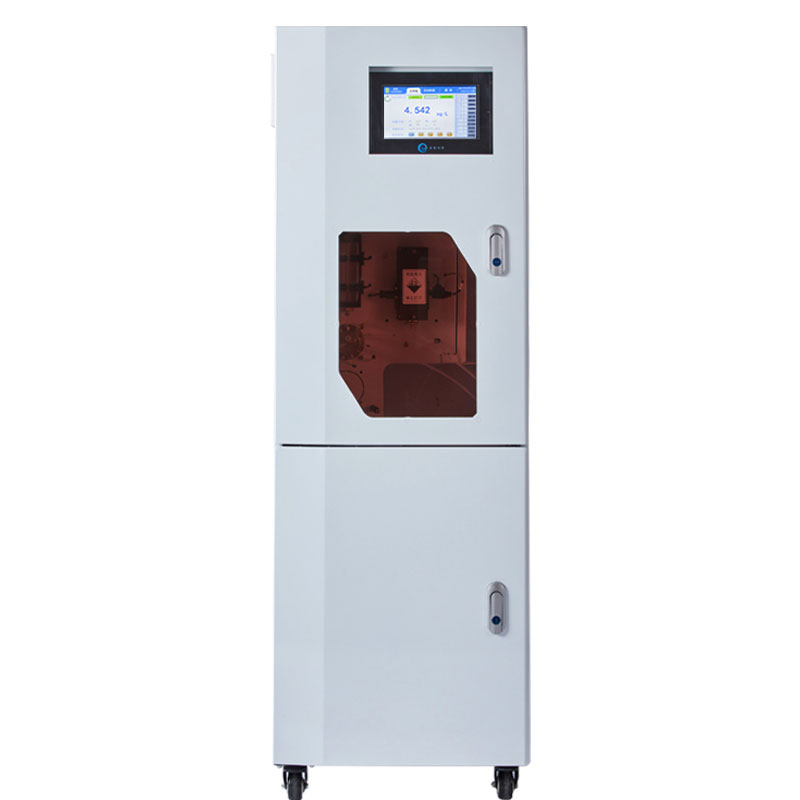Shandong Fengtu IOT Technology Co., Ltd
Sales Manager:Ms. Emily Wang
Cel,Whatsapp,Wechat:+86 15898932201
Email:info@fengtutec.com
Add:No. 155 Optoelectronic Industry Accelerator, Gaoxin District, Weifang, Shandong, China

Sales Manager:Ms. Emily Wang
Cel,Whatsapp,Wechat:+86 15898932201
Email:info@fengtutec.com
Add:No. 155 Optoelectronic Industry Accelerator, Gaoxin District, Weifang, Shandong, China

Model:FT-Tcr
Brand:fengtu
1.Total Chromium Analyzer Principle
This product uses diphenylcarbazide spectrocolorimetry to determine. After the water sample is mixed with a strong oxidant, trivalent chromium is oxidized to hexavalent chromium. In an acidic environment and in the presence of an indicator, the hexavalent chromium reacts with the indicator to generate a colored complex. The analyzer detects the color change and converts the change into a total chromium value for output. The amount of the generated colored complex is equivalent to the total chromium amount.
2. Features of Total Chromium Analyzer
The new photoelectric quantitative technology is not affected by interference such as large chromaticity, large amounts of suspended matter, and large amounts of bubbles. It has high reliability and accuracy and strong anti-interference ability.
High detection accuracy, low measurement limit and small long-term drift of the instrument.
It has one-button self-test function and self-diagnosis function.
Adopt single-channel highly integrated valve group, maintenance and cleaning are simple and quick.
All-weather networking function, monitor the instrument operation status anytime and anywhere.
It has alarm function, quality control function and reverse control function.
It has automatic cleaning and automatic calibration functions.
It has functions of hourly measurement, interval measurement and external control measurement.
It will work automatically after power failure.
Automatic prompt and automatic reset function for fault and reagent (sample) shortage.
With fault recording function.
Can save historical data for more than 3 years.
Meet the requirement of separate discharge of cleaning liquid and waste liquid
Total Chromium Analyzer Technical Specifications
Measurement method: Diphenylcarbazide spectrophotometric colorimetry
Measuring range: 0-2 mg/L; 0-20 mg/L; range can be customized
Indication error: ≤±8% Detection limit: 0.01mg/L
Repeatability: ≤±3% Waste volume: 6mL/time
Memory effect: ≤±5% Actual water sample comparison: ≤±10%
Constant temperature time: 360 seconds Voltage stability: ≤±5%
Measuring cycle: 25 minutes Calibration cycle: any specified time
Maintenance cycle: ≥720h/time Maintenance workload: <2 hours/month
Reagent consumption: 3 months/500ml Display output: Equipped with 10.1-inch color LCD touch screen
Color development temperature: recommended temperature is 125℃, can be set according to the actual water sample conditions
Data export: The measured values can be imported into a USB flash drive and saved via the USB port
Signal output: RS485/RS232/USB interface/standard 2-way 4-20mA output/standard 2-way switch input and output
Environmental requirements: Temperature-controlled indoor environment, recommended temperature (5-28°C), humidity ≤ 90% (no condensation)
Power supply and power: (220V±22)V/AC, (50±0.5Hz), 5A, 150W
Instrument size: upper cabinet 600*450*300mm; upper cabinet 700*450*300mm
Microclimate refers to the special climate formed in the atmosphere of a local area, which is different from the macroclimate, due to differences in underlying surface factors such as surface properties, terrain, and vegetation. Compared with the macroclimate, the microclimate is closer to human pro...
Agrometeorological stations are small automatic weather stations deployed in farmlands, orchards, greenhouses and other areas. They automatically monitor climate and environmental factors closely related to agricultural production activities, helping farmers and researchers grasp field environmental...
It is feasible to use soil moisture monitoring system to guide agricultural irrigation. Soil moisture monitoring systems can monitor soil moisture, temperature, conductivity and other parameters in real time to help farmers understand the soil condition of farmland in time and provide scientific bas...
A Portable Weather Station is a mobile observation device that integrates multiple meteorological sensors. It is capable of monitoring and recording various atmospheric environmental elements in real-time, providing accurate on-site data support for core meteorological operations, emergency monitori...